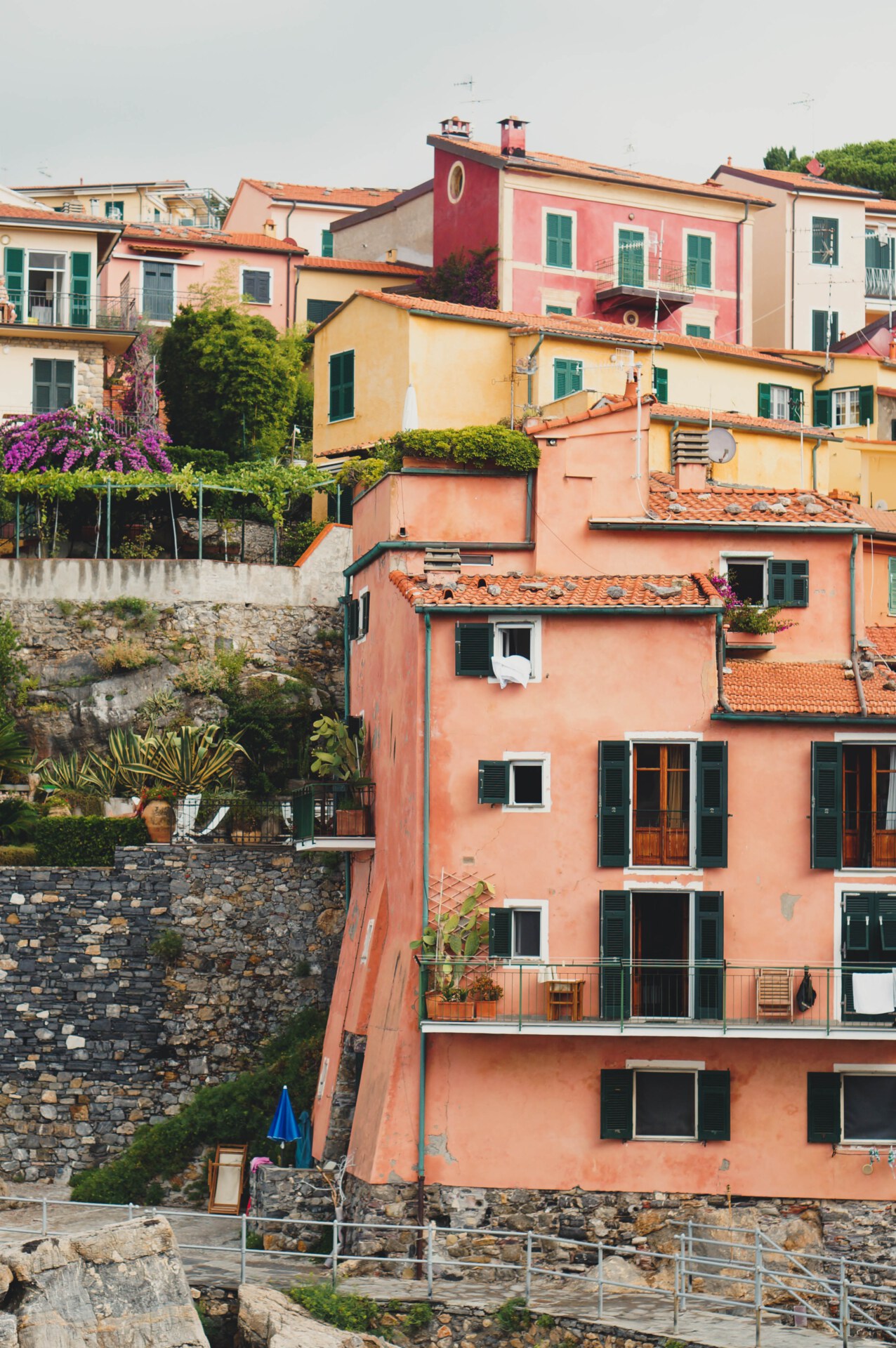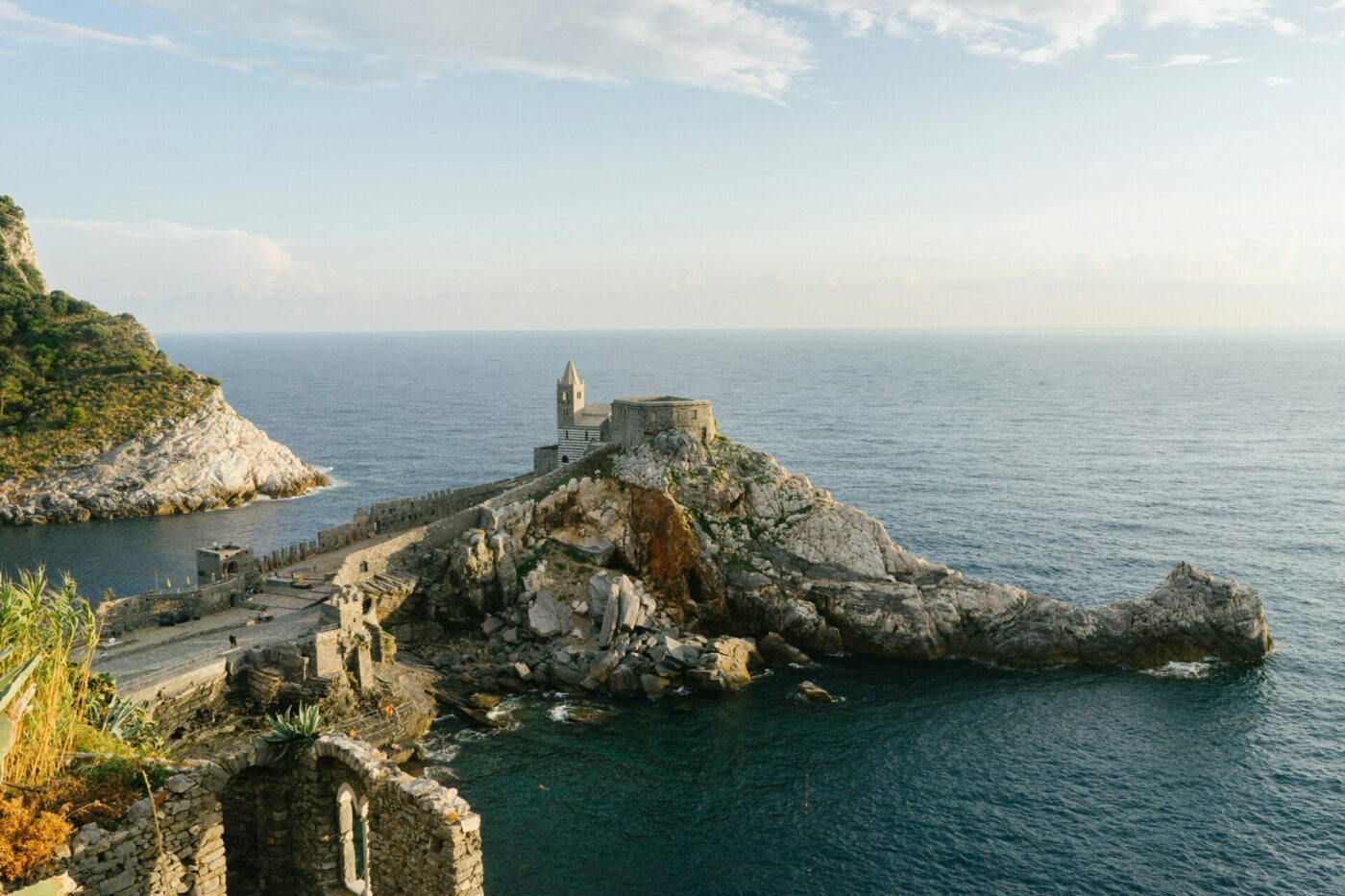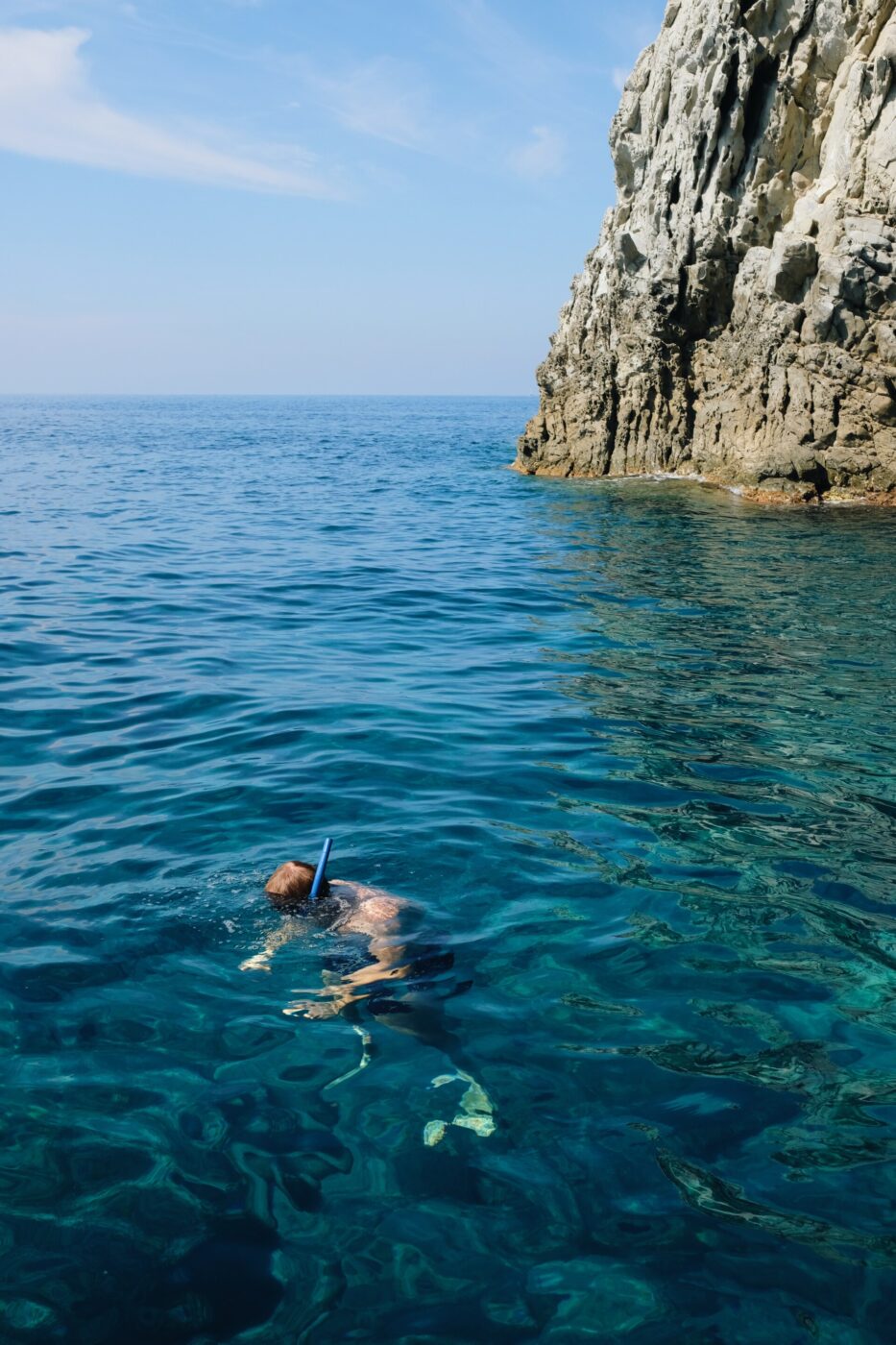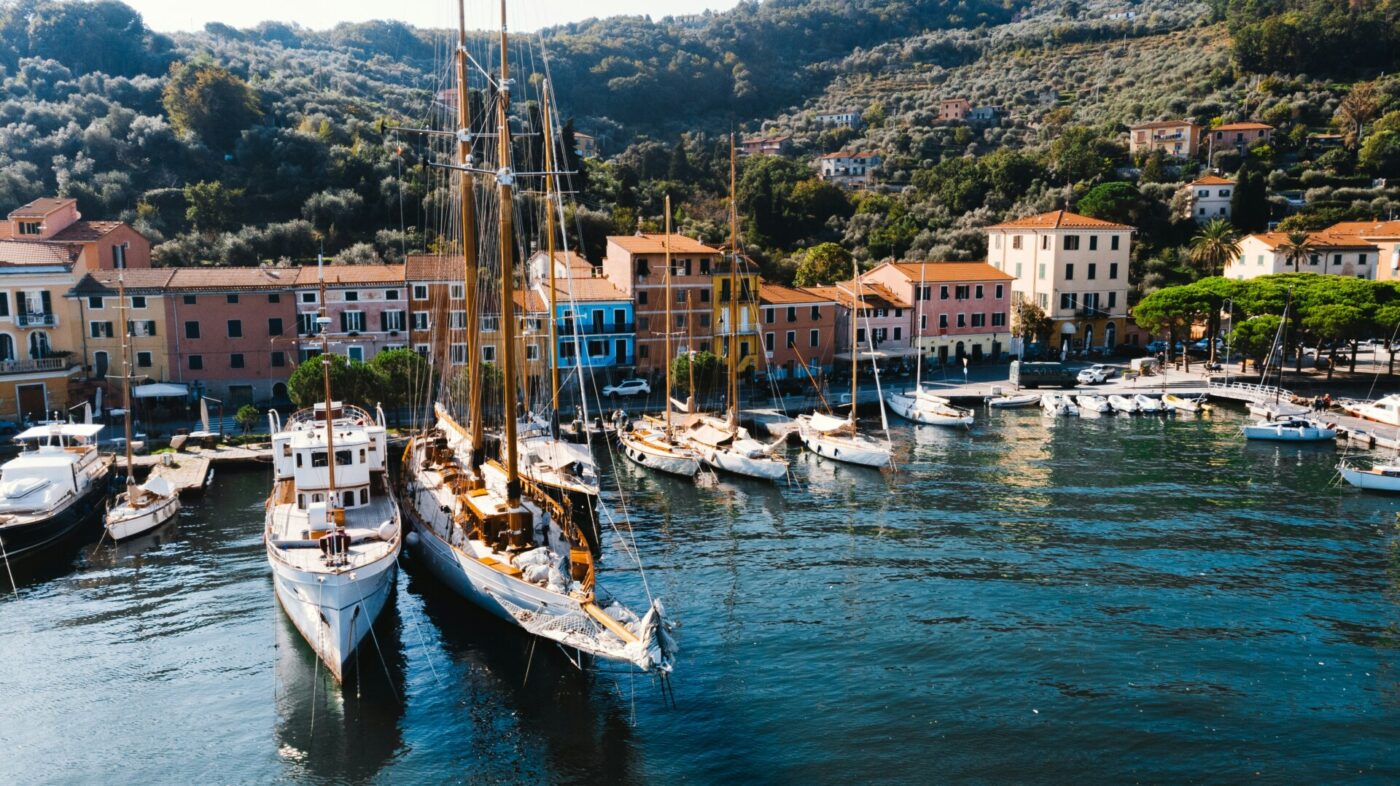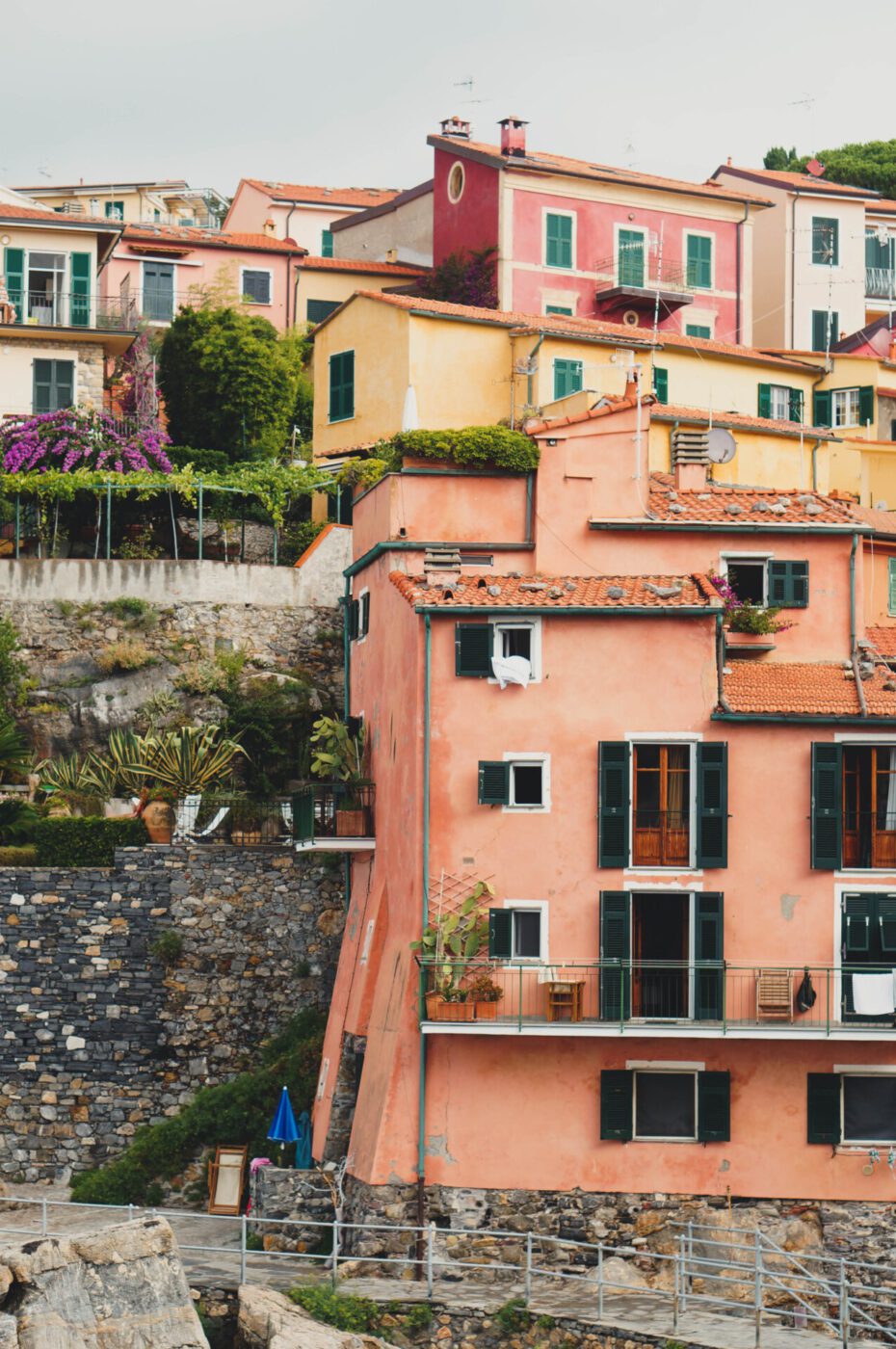When it comes to the Italian Riviera, people seem to patter on and on about Cinque Terre, but just down the coast is another (equally as charming) stretch of shoreline, with a literary history to boot. The so-called Gulf of Poets (Golfo dei Poeti), formally the Gulf of La Spezia, offers the same colorful towns and clear waters of its much-talked-about sibling, but with a fraction of the crowds and costs.
It was 1919 when playwright Sem Benelli referred to this gulf, for the very first time, as the Gulf of Poets during his stay in San Terenzo while writing the opera La Cena delle Beffe:
“Beato te, o Poeta della scienza che riposi in pace nel Golfo dei Poeti. Beati voi, abitatori di questo Golfo, che avete trovato un uomo che accoglierà degnamente le ombre dei grandi visitatori.”
“Blessed are you, o Poet of science who rests in peace in the Gulf of Poets. Blessed are you, inhabitants of this Gulf, who have found a man who will worthily welcome the shadows of great visitors.”
He was but one of many attracted to the gulf’s natural splendors, and its small towns and villages became homes and getaways for a slew of poets, artists, and writers. Percy Bysshe Shelley, Mary Shelly’s spouse and one of the epic poets of the 19th century, visited several times before stopping to live in the small village of San Terenzo. (He is said to have died on the boat trip back to San Terenzo from Livorno after a terrible storm.) Renowned Renaissance painter Sandro Botticelli drew inspiration from his encounter with Simonetta Vespucci in the village of Fezzano, ultimately immortalizing her as the goddess in his iconic masterpiece The Birth of Venus. Art historians speculate that the bays depicted on the painting’s right side are those of the Gulf of Poets. Nearby Portovenere has a rocky cove dedicated to Lord Byron. According to legend, Byron swam from the now-popular swimming spot until he reached his friend Shelley in Lerici on the opposite side of the gulf–a distance of about nine kilometers, or five and a half miles.
David Herbert Lawrence, Virginia Woolf, and George Sand, together with Italians Petrarca, Montale, Gabriele D’Annunzia, and Filippo Tommaso Marinetti, are just a few more of the notables who loved the gulf and praised its rarest beauties in their texts.
Today, it’s perhaps played second fiddle to Cinque Terre for the more commercial character of its waters. Since the days of yore, La Spezia, the city right in the middle of the gulf, has developed a port, and you’ll see larger boats traversing the gulf than you would its northern counterpart. That said, the charm that centuries of creatives have painted and written about has hardly been compromised.
Here, a guide to the beaches and towns well worth a visit in the Gulf of Poets.
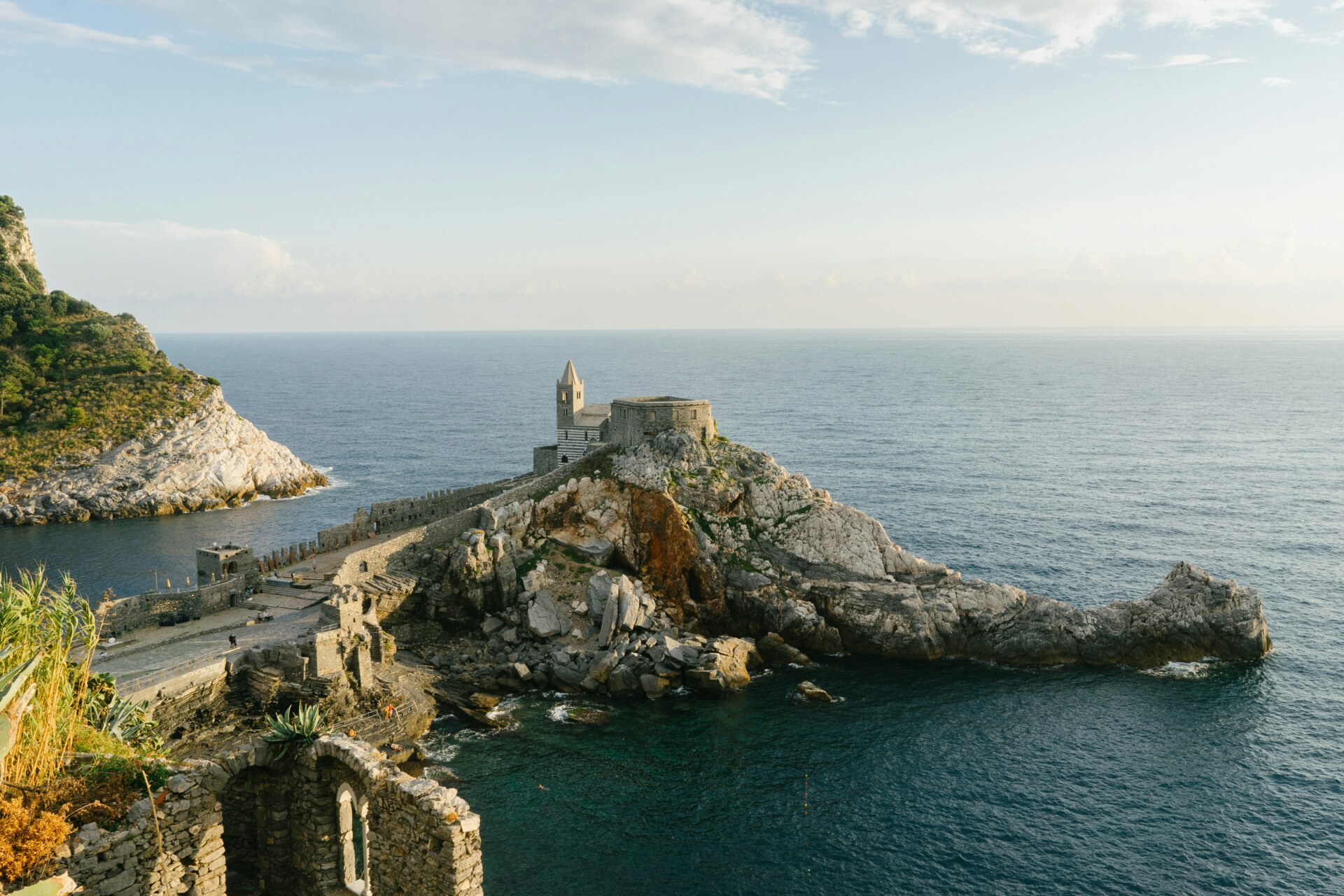
Portovenere
Punta Bianca
Punta Bianca is one of the most sought after free beaches in the gulf. The only way to get to Punta Bianca is a small path located to the left of the road that leads from Bocca di Magra to Montemarcello (also indicated by the CAI signs). Rocky and wild, the name Bianca comes from the conformation of the limestone rocks, which look like dunes emerging from the sea. It’s certainly not the most accessible, but the beach is a real pearl of the Ligurian Sea.
Tip: On the road to reach Punta Bianca, at the altitude of the municipality of Ameglia, you can try the experience of eating in a trabucco (the massive old fishing constructions almost entirely built from wood), in the restaurant of the same name: Il Trabucco.
Punta Corvo
With very dark sand, sometimes black and burning, Punta Corvo is Punta Bianca’s complement. To reach the beach, a result of slate rock crumbling, you must descend a 700-step staircase, but it’s worth it for the contrast of the blue cornflower-colored sea and the dark rocks, along with breathtaking views of the nearby islands.
Tip: Upon returning from Punta Bianca and Punta Corvo, regenerate after the steep descents and the equally strenuous climbs at the Caffè Delle Ragazze in Montemarcello. Managed solely by female staff, the bar and restaurant has great seasonal, fresh, and veg-friendly options; you can try Lunigiana’s elusive testaroli here.
Tellaro
Tellaro is the southernmost village in the Gulf of Poets, marked by a dream of colored houses that look like a watercolor palette; from a distance, it seems as if a single large rock supports the town like in a fairytale. Closed to motor vehicles, Tellaro comes alive with visitors during summer, while winter is much quieter and all that can be heard is what David Herbert Lawrence defined as the “eternal song of the sea”–the sound of the waves crashing against the rocks.
Tip: At Bar La Marina, also run only by women, you can eat delicious Ligurian focaccia with pesto (and possibly anchovies), accompanied by an excellent glass of Vermentino from the hills of Luni–all with a sea view.
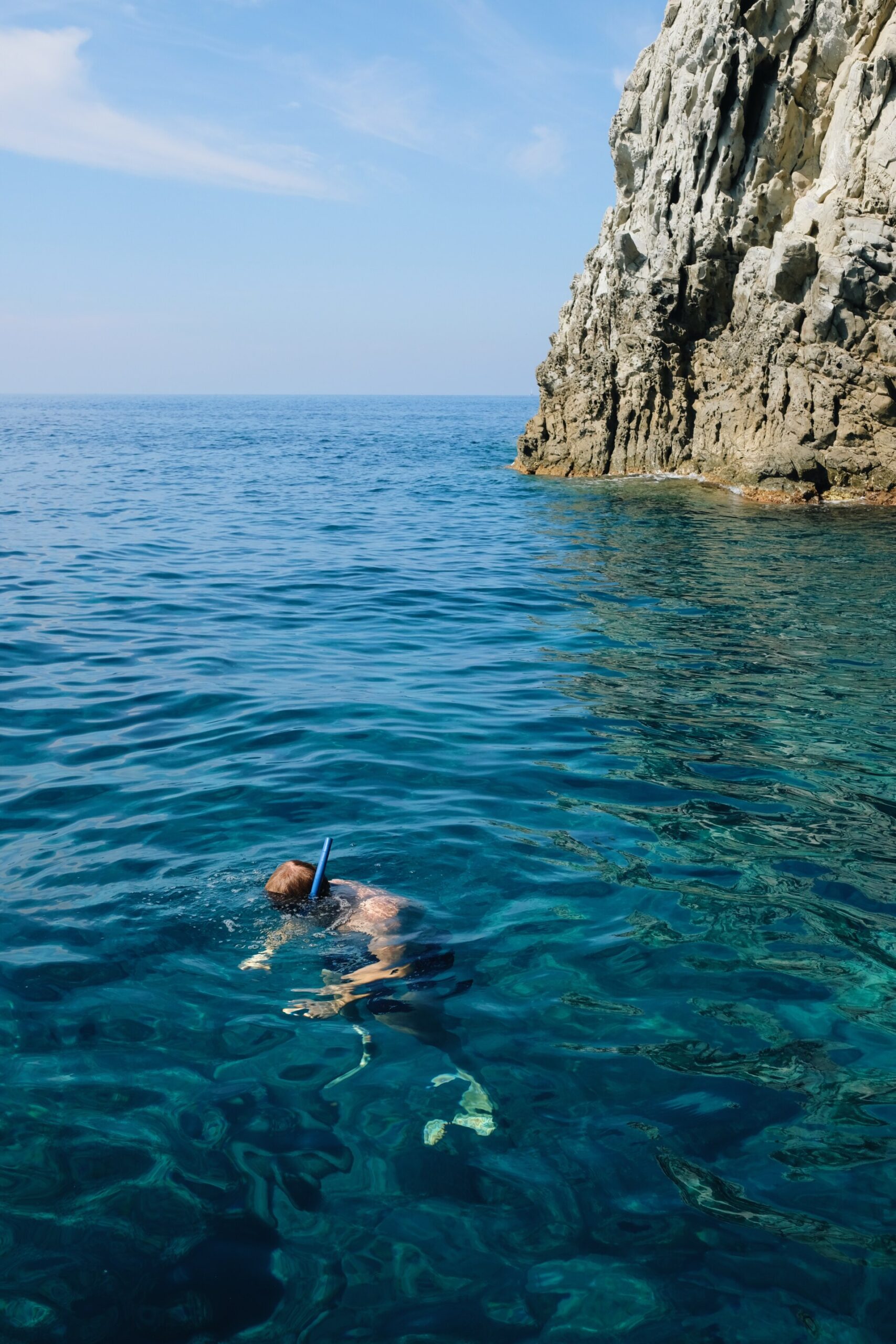
Photo by Claudia Koehler
Fiascherino
Halfway between Lerici and Tellaro, Fiascherino is marked by a rocky coast, an alternative to the more crowded sandy beaches. Here you can bake on the rocks or find a spot shaded by the maritime pines.
Tip: In a secluded cove, Eco del Mare is a little boutique hotel and beach club. Spend the night in one of the six rustic-chic rooms or visit for a meal in the open-air restaurant and to lounge the day away on the private beach.
La Serra
This small hamlet of Lerici, which features ancient defensive walls, is most suitable for those looking to hike and who prefer to observe the sea from above. The panorama–with Lerici in the foreground, followed by San Terenzo, and the islands of Palmaria, Tino, and Tinetto–is really something.
Lerici
Lerici smells of bougainvillea and the sea and might just be one of the most idyllic towns of the Gulf of Poets. With a small marina, historic quarter, and an imposing Pisan-Genovese Castle, the town is a bit more bustling than some of the others and has no shortage of cafès, bars, and restaurants. The adventurous can also rent kayaks from here and paddle down to Tellaro or Fiascherino and back.
Tip: Siamo Fritti, in the heart of town, is a go to for a hearty serving of fritto misto, and La Conscienza di Zeno is a great place to grab a drink and watch the sun go down over the sailboats.
Le Grazie
The village of Le Grazie is nestled among the dense olive trees between the Pezzino and Varignano promontory and is protected by the hills of Castellana and Muzzerone. For those of you who are history and archaeology buffs, this one’s for you. The seaside Varignano Roman Villa, which dates back to the 1st century BC, is the best preserved of its kind along the coast.
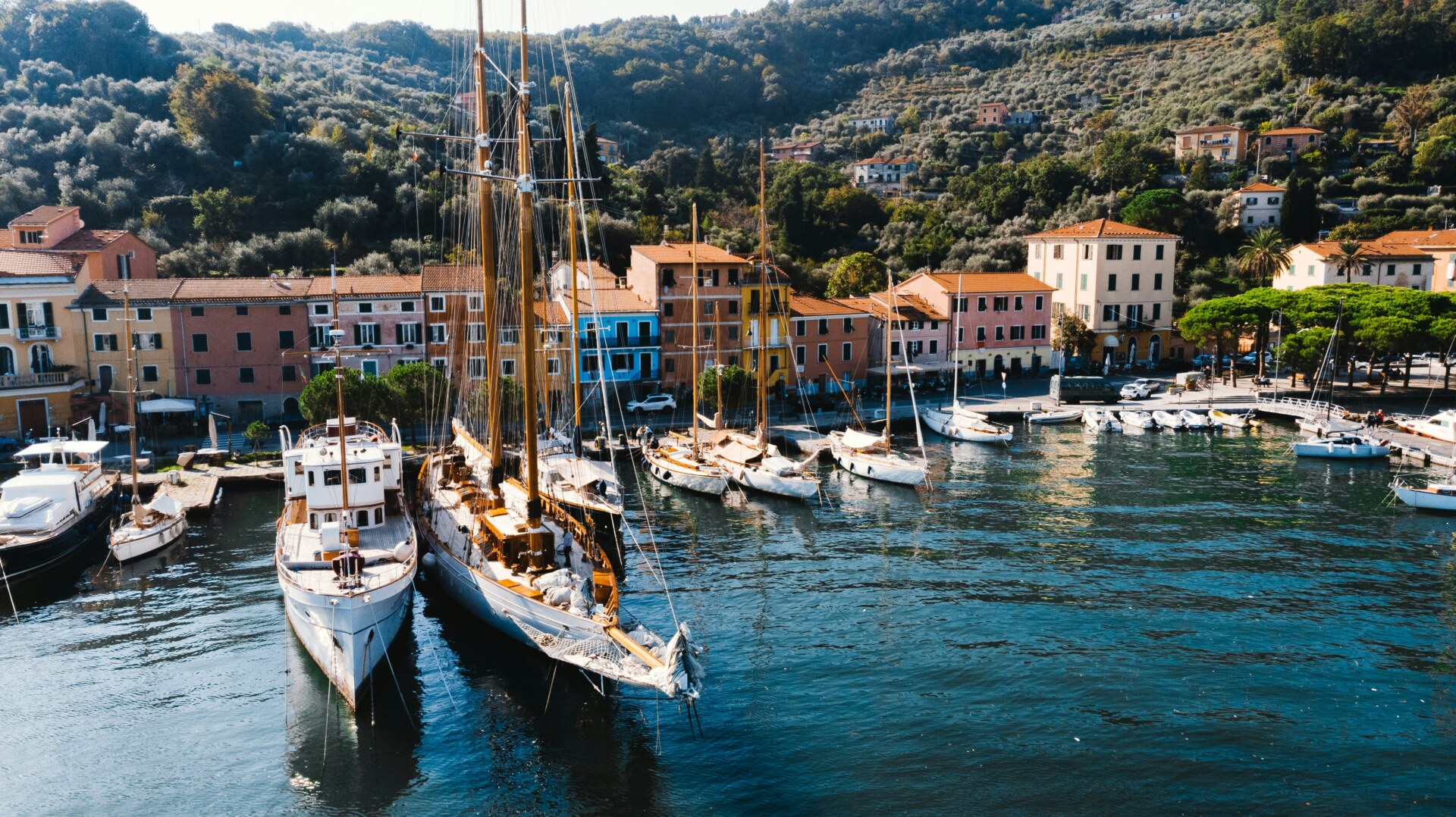
Le Grazie; Photo by Chris Rosiak
Portovenere
The name of this small sailor’s village derives from the temple dedicated to the Goddess Venus Ericina (one of the cults of the Roman goddess Venus, protector of fertility and formerly known as Aphrodite Ericina) that stood on the same place where the Church of San Pietro stands today. Swim among jagged rocks in Lord Byron’s grotto below the church for stunning views of the latter and the Doria Castle, a former defensive stronghold of the Genovese republic. Often dubbed the “sixth” Cinque Terre, Portovenere is accessible only by car or boat, which, though it is the most touristy town of the Gulf of Poets, keeps the hubbub manageable.
Palmaria, Tino & Tinetto
This little archipelago in the waters of Portovenere is made up of the three islands–from largest to smallest Palmaria, Tino, and Tinetto. You can spend the night on the former, which counts a population of less than 50, and hike around abandoned black marble mines and military buildings. Tino is under the jurisdiction of the Navy and is only open to visitors on September 13th, the feast of the patron saint San Venerio, while Tinetto is little more than the remains of the first Benedictine monastic settlement. The three, together with Portovenere and Cinque Terre, have been included in the list of UNESCO heritage sites.
Tip: The islands are best explored by boat: charter a little dinghy in Portovenere and spend the day swimming in and around the wild coves.
La Spezia
A renowned commercial and military port, La Spezia is the second largest city in Liguria, and you can find quite a few museums dedicated to its maritime heritage. The city offers cheaper lodgings and a homebase from which to explore the Gulf of Poets–though, be warned, there’s no stretch of usable beachfront here.
Tip: For a summer’s night out in the city, there’s nowhere better than PIN La Spezia, an open-air complex bedecked in fairy lights with various food and beverage stalls and a whole roster of live music to dance to.
